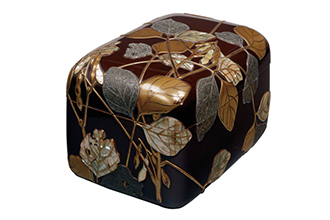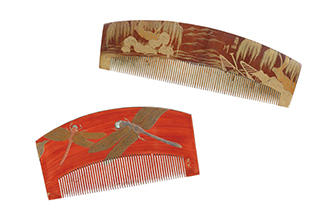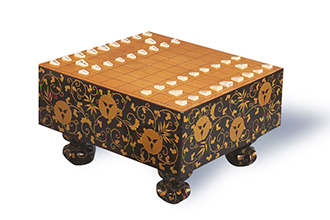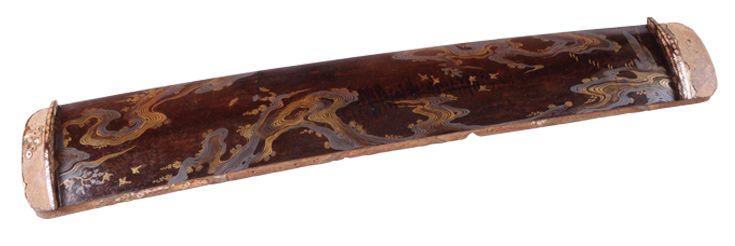niponica is a web magazine that introduces modern Japan to people all over the world.
2019 NO.25
Japan’s Decorative Art of Urushi

Beauty Created From Strength and Delicacy
In Japan, urushi, which is typically used for household items such as tableware and furniture, has also been widely employed in the manufacture of ritualistic and military paraphernalia, architectural and artistic structures, and musical instruments.
What kinds of values and sense of aesthetics have created and fostered the many items of Kogei in Japan that use urushi?
Mr. Murose, one of Japan's Living National Treasures, gives us some insight.
From a conversation with: Murose Kazumi
Urushi culture in Japan
In Japan, urushi collected from the urushi tree is used as a coating material. It is applied to a variety of objects, from household items through ritualistic paraphernalia, tools and structures.
Japanese artisans and manufacturers have produced a wide range of items that take full advantage of the special characteristics of urushi.
The culture of urushi, created by the hands of various artisans, is expressed through a variety of techniques, and is a feast for the eyes.
For the reader:
Urushi - a natural resin coating processed from sap extruded from the urushi tree (toxicodendron vernicifluum). It is also used as an adhesive. Unlike the lacquer used for black furniture and tableware in Europe, which was traditionally obtained by dissolving the secretions of lac insects in alcohol, urushi is applied in multiple layers to produce a rich, glossy and deep black with a sense of transparency.
Kogei - a word used to describe traditional Japanese craft (or decorative art) that unifies beauty and utility.
Shikki - an item of Kogei to which multiple layers of urushi have been applied. In English, such items are generally known as “lacquer ware,” but it is not lacquer that is actually used to coat these objects. Therefore, in this article, the term shikki, which is made up of the Japanese characters for urushi + ware, is used.
Kogei items made using urushi
Writing box - a box for writing implements. Multiple techniques including maki-e (gold raised lacquer work) and raden (mother-of-pearl inlays) are used to depict the pods and leaves of bean plants on the outside, while there is a picture of a rabbit drawn on the back of the lid.
"Writing box Beans and rabbit design in maki-e lacquer and mother-of-pearl inlay” 26 x 18.4 x 14.7cm
19th century (Tokyo National Museum. Photograph provided by TNM Image Archives.)
A shogi (Japanese chess) board, which used to be a standard item in a wedding dowry. Made using the maki-e technique, it depicts the Mitsu-Yoko-Kikumon - the family crest of the Arisugawa-no-Miya family (an imperial family that existed from the first half of the 17th century through the early 20th century).
" Shogi board with a bamboo grass pattern, coated in black urushi, in maki-e " 36.6 × 33.7 × 21.7cm
19th century (Hikone Castle Museum. Photograph provided by the museum.)
A box for koma (the pieces that are lined up and moved around the board during a Japanese chess game)
19th century (Hikone Castle Museum. Photograph provided by the museum.)










